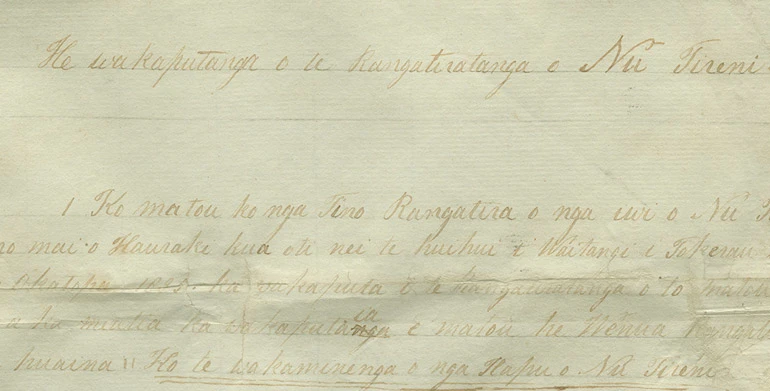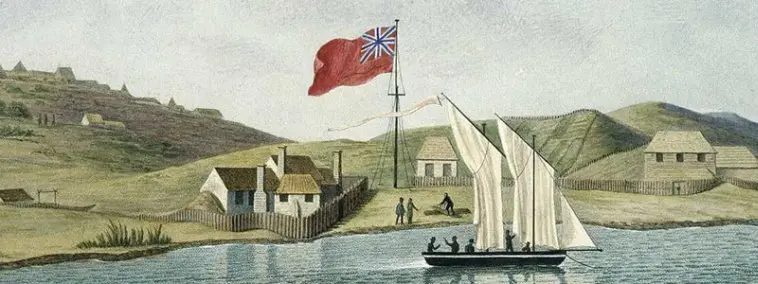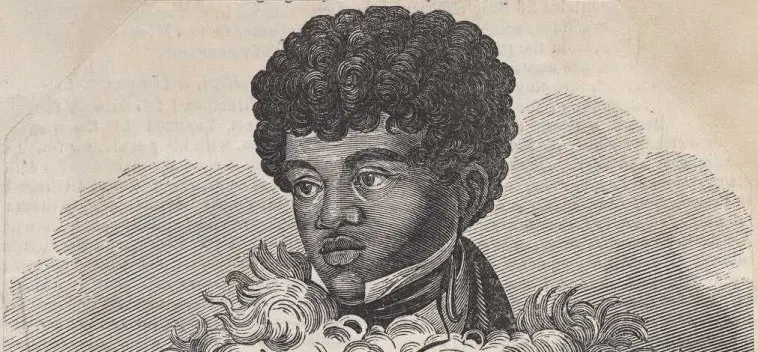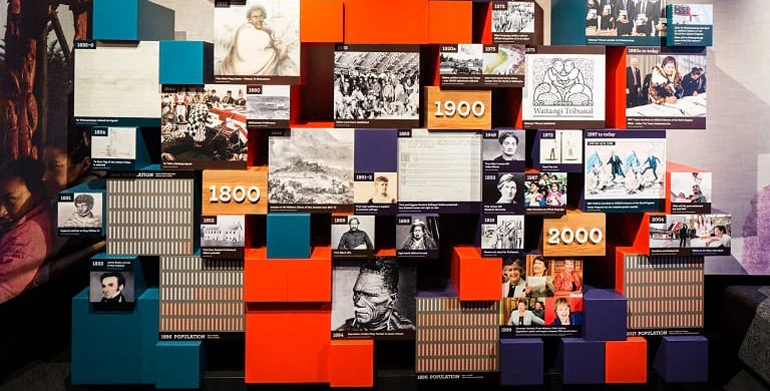A declaration: He Whakaputanga

He Whakaputanga o te Rangatiratanga o Nu Tireni – the Declaration of Independence of the United Tribes of New Zealand is hugely important. It was how rangatira (Māori leaders) told the world, back in 1835, that New Zealand was an independent Māori nation.
He signed: Patuone

Eruera Maihi Patuone | ? – 1872 | Iwi Ngāpuhi | Hapū Ngāti Hao, Ngāti Pou, Ngāti Rangi. All rights reserved.
Patuone was the older brother of Tāmati Wāka Nene and a principal leader of Ngāti Hao. Said to be 108 when he died in 1872, he was a “warm friend of Europeans, supporter of the Queen's laws, and peacemaker.”
Patuone signed He Whakaputanga sometime between 29 March 1836 and 25 June 1837. In 1840 he signed Te Tiriti o Waitangi.
He aha tōna tapu?
I te taenga mai a te Pākehā he iwi rangatira te iwi Māori. Nō tēnā hapū, nō tēnā hapū te mana whenua me te rangatiratanga. Kāore i eke te ture Pākehā ki ēnei motu. Nō reira, he pukapuka whakaatu ki ngā rāwaho he whenua rangatira tēnei, he whenua Māori.
I whakaaetia e Ingarangi tēnei Whakaputanga Rangatiratanga. Nō konā, e tika ana me whakarite tiriti ngā rangatira Māori kia tū ai he kāwana Pākehā ki tēnei whenua. Koia tēnei ko Te Tiriti o Waitangi i te tau 1840.
Kua pūmau rawa atu te iwi Māori ki ngā kupu o tēnei pukapuka tapu i runga i ngā marae maha huri noa i te motu, arā, e tūturu ai te rangatiratanga, me te mana motuhake o te iwi Māori.
He aha tōna tapu?
I te taenga mai a te Pākehā he iwi rangatira te iwi Māori. Nō tēnā hapū, nō tēnā hapū te mana whenua me te rangatiratanga. Kāore i eke te ture Pākehā ki ēnei motu. Nō reira, he pukapuka whakaatu ki ngā rāwaho he whenua rangatira tēnei, he whenua Māori.
I whakaaetia e Ingarangi tēnei Whakaputanga Rangatiratanga. Nō konā, e tika ana me whakarite tiriti ngā rangatira Māori kia tū ai he kāwana Pākehā ki tēnei whenua. Koia tēnei ko Te Tiriti o Waitangi i te tau 1840.
Kua pūmau rawa atu te iwi Māori ki ngā kupu o tēnei pukapuka tapu i runga i ngā marae maha huri noa i te motu, arā, e tūturu ai te rangatiratanga, me te mana motuhake o te iwi Māori.
Why is it important?
Described by British Resident James Busby as the ‘Magna Carta of New Zealand Independence’, He Whakaputanga was a bold and innovative declaration of Indigenous power.
It is inseparable from the Treaty of Waitangi and the issues that shape Aotearoa New Zealand. As Ngāpuhi elder Hone Sadler notes, ‘He Whakaputanga te matua, Te Tiriti te tamaiti — He Whakaputanga is the parent, Te Tiriti is the child.’
He Whakaputanga is New Zealand’s first ‘constitutional document’ — a document that defines the existence of the nation, who is in control of it, and how it will be run. It is also one of the earliest assertions of Māori identity beyond separate iwi and hapū.
The word ‘whakaputanga’ is usually translated as ‘declaration’, but it can also mean ‘emergence’ — the emergence of a new country. The words used in the document to describe an independent state, “he whenua rangatira”, also have a deeper meaning of a land at peace under its rightful owners.
He Whakaputanga – Whose hand was it that crafted these words?
Ki te kore He Whakaputanga, tērā pea kāore i puta mai te Tiriti o Waitangi. Haere mai ki te ako kōrero anō, ki He Tohu.
Without He Whakaputanga, there may never have been a Treaty of Waitangi. Come and find out more, at He Tohu.
One of the signatories: Rewa
A highlight from the He Tohu exhibition

Rewa (also known as Manu) signed He Whakaputanga with his brothers Moka and Wharerahi. An important ally of Hongi Hika, Rewa was a well-regarded leader of Ngāpuhi’s northern alliance.
His support for the mission stations at Kerikeri and Te Waimate helped them survive, and he was a driving force behind the 1831 letter to King William IV.
Rewa signed the Treaty but later tried to stop others from signing: “Your land will be taken from you, and your dignity as chiefs will be destroyed.”
Image: Etablissement des missionnaires anglais a Kidikidi, 1824. C-082-094
The first te reo letter
A highlight from the He Tohu exhibition

The final Māori text of He Whakaputanga was written by Eruera Pare Hongi, who also composed the first known independently-written letter in te reo Māori in 1825, when he was only 10 years old.
Image: Portrait of Edward Parry, a baptized New Zealand youth, 1834. E-296-q-180-2
Get into He Whakaputanga’s past and present
The Declaration of the Independence of New Zealand — Archives New Zealand
Who were the rangatira who signed He Whakaputanga — Archives New Zealand
The Declaration, with transcript – NZHistory
A flag to represent New Zealand is chosen – NZHistory
Explore our resources for schools
Explore He Tohu with your students
Come explore He Tohu
See the original He Whakaputanga, Te Tiriti and the Women’s Suffrage Petition.
Explore the stories of He Whakaputanga, and get to know the people who signed the document.

